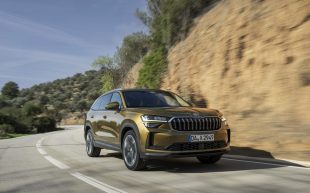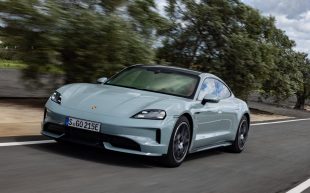First Drive review: Skoda Octavia vRS 230 (2015)
A touch more power but a big speed differential
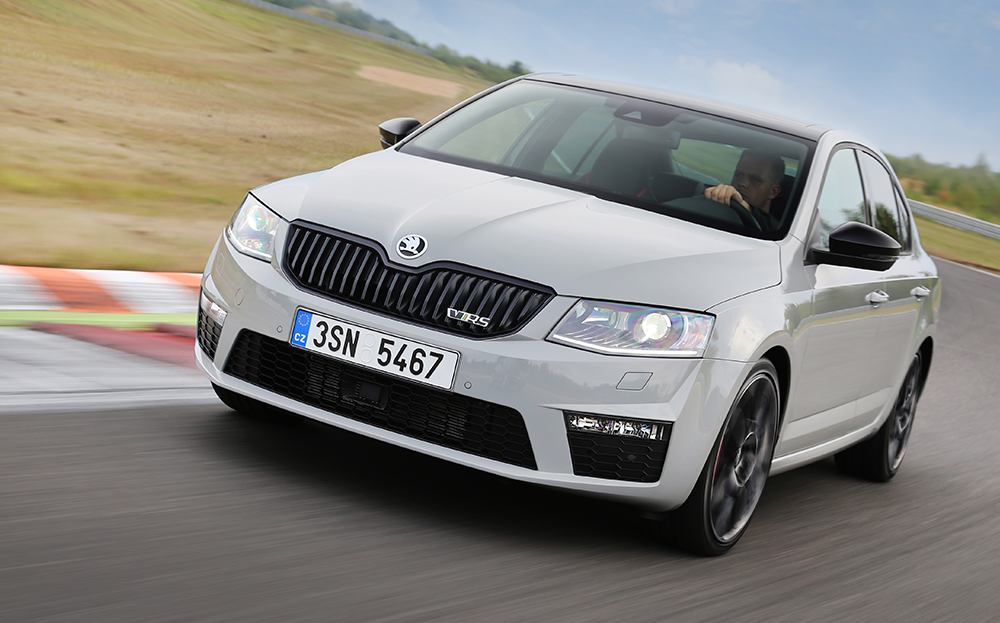
I WAS never much good at differential calculus when I was at school. Had I been, maybe I would have been an engineer rather than a journalist. The car you see here is much, much better at that differential stuff than me. More than that, it’s the key to the Skoda Octavia vRS 230’s character.
View the used Skoda Octavias for sale on driving.co.uk
You probably know about the Octavia vRS already. Each of the main brands in the Volkswagen Group has a hot version of its mid-sized hatchback, and a very hot one on top of that. So above the Golf GTI is a four-wheel-drive Golf R. Audi has an S3 and an RS 3. Seat has the Leon Cupra in two states of engine tuning. And now Skoda has brought out an enhanced vRS, costing an extra £2,520.
In truth, the enhancements don’t seem huge. There’s an extra 10bhp, making 230 horsepower in metric parlance (hence the name), or 227bhp. The additional power comes from revised mapping of the engine’s electronics, allowing slightly more turbocharger boost, and from an exhaust system whose three silencers allow freer gas flow and a “fruitier” sound.
You might, if by any chance you’ve made the study of the Volkswagen Group’s fast cars your specialist subject, wonder why this ultimate Octavia still has rather less power than, say, a Seat Leon Cupra, available with 262 or 276bhp. Perhaps that’s Skoda’s place in the group’s pecking order summed up.
The vRS 230 does, though, have the clever differential found in the Seat and the Golf GTI with Performance Pack but recalibrated here to the Skoda engineers’ taste. It makes quite a difference to the Skoda’s ability to chew up and spit out the famous North Loop of Germany’s fast but tortuous Nürburgring, lap times around which are something of a motor industry benchmark.
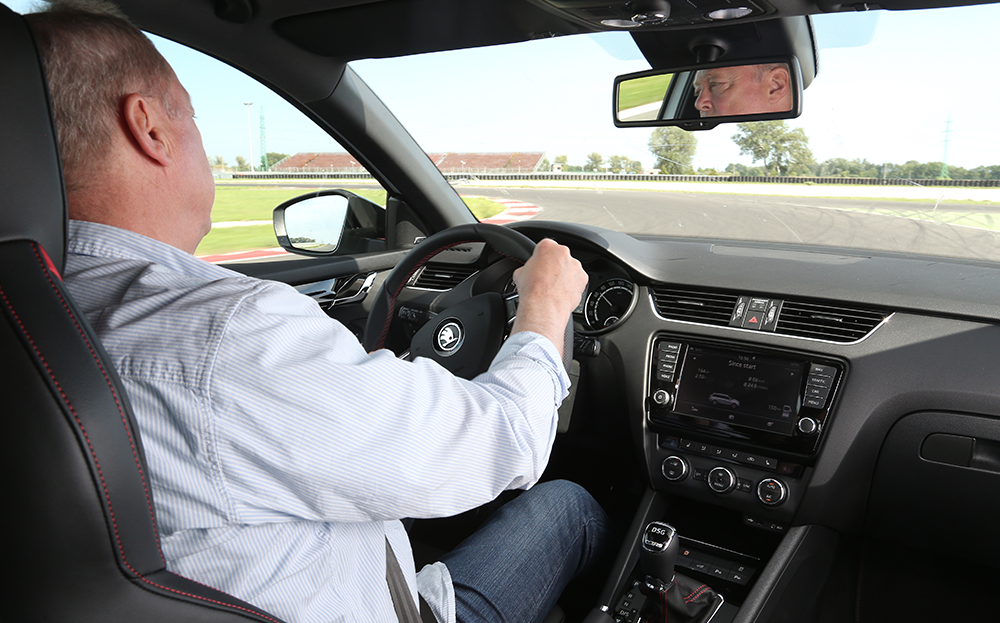
A vRS 230 does the lap 10 seconds quicker than a normal vRS, pulling out a lead of nearly half a kilometre. Part of this is down to the extra power, but most comes from the improved ability to transfer this power to the road.
The regular vRS has a so-called XDS system, which gently brakes a front wheel that is threatening to spin its power away in a haze of rubber smoke, and the vRS 230 also has this system, which is sensitive enough to cope with the low speeds and easy slippage you might encounter on snow or ice. The clever differential, dubbed VAQ, takes over at higher speeds, and uses clutch plates clamped together at varying pressures to control the relative slippage between the front wheels’ drive shafts.
So instead of slowing the inner front wheel in a bend, the system ensures more of the engine’s output is sent to the outer front wheel. This reduces wasted energy and keeps the vRS going faster. Sensors process data including speed, steering angle, rapidity of steering-wheel movement, amount of accelerator movement, cornering G-force and braking effort to arrive at the optimum differential slippage and steady the Skoda’s balance in a bend.
A vRS 230 laps the Nürburgring 10 seconds quicker than a normal vRS, pulling out a lead of nearly half a kilometre
Does it work? It seems to, very well. My vRS 230 test took place on the Slovakia-ring racetrack, outside Bratislava, with its mixture of fast and slow corners. The first couple of laps brought strong but not explosive urge from the engine, its power delivery even all the way to 7000rpm rather than a pyrotechnic surge. Enthusiastic driving quickly brought in the traction and stability controls to stifle the pace, at which point you had to wonder if the VAQ actually has a point. So after a bit of fumbling with switches, the systems had been turned off as far as possible, which left a trace of stability control as a safety net.
Now it was better. As the nose was aimed into a fast bend and the front wheels started to drift wide, you could feel the differential tightening and the front end being pulled round the bend. Torque vectoring, the engineers call it. Easing off the accelerator tucked the front end back into the corner, and when I accelerated hard again, instead of the wheelspin I might have expected, the front wheels gripped keenly and the Octavia powered onwards.
Through a fast right-left wiggle I could clearly feel the differential diverting power to whichever front wheel could better use it. The system will also keep the Skoda stable on a road surface of rapidly changing grip. At no point did the vRS 230 feel as if it would enter a tailslide; it’s sensible, safe and fun, but then it is a Skoda, so what else would you expect?
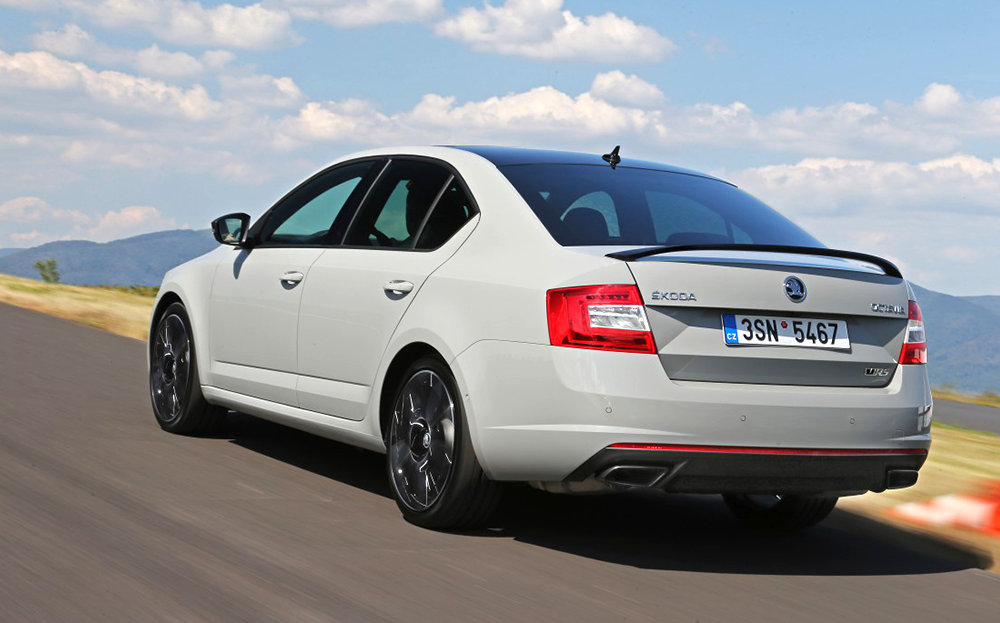
That’s a lot of words about a component of a car’s transmission, but it’s the key vRS 230 difference. There are others, of course. The steering responds more quickly. Then there’s the lap-timer function, the leather upholstery on heated, electrically adjustable seats, the extra red stitching and, outside, much detailing in gloss black. This finish surrounds the headlights, adorns the hefty 19in wheels and covers the door mirrors and exhaust tailpipes. The estate version has gloss-black roof rails, too.
As for pace, there’s more than 150mph on offer in this Skoda – a figure that would have been hard to contemplate a couple of decades ago, unless you pushed one off a cliff, which, legend has it, some owners did – with acceleration to 62mph in 6.8 seconds for the six-speed manual and seven seconds for the six-speed, double-clutch automatic. Carbon dioxide output is the same as for the standard vRS.
Should you buy a vRS 230? The Seat Leon Cupra offers more pace and agility for about the same money, but less space. The two cars, and their other VW Group cousins, have the same platform, but the Skoda, with its extra length, could almost be from the class above – it’s that big. It’s also well equipped, beautifully finished and very civilised for a sporting car. Could this Skoda be a faster, lower-cost alternative to a BMW 320i M Sport? It’s not such a laughing matter.
2015 Skoda Octavia vRS 230 hatchback specifications
- PRICE: £26,150
- ENGINE: 1984cc, 4 cylinders, turbo
- POWER: 227bhp @ 4700rpm
- TORQUE: 258 lb ft @ 1500rpm
- TRANSMISSION: 6-speed manual (double-clutch auto optional)
- ACCELERATION: 0-62mph in 6.8sec
- TOP SPEED: 153mph
- FUEL: 44.8mpg
- CO2: 143g/km
- ROAD TAX BAND: F (£145 per year)
- RELEASE DATE: On sale now
Skoda Octavia vRS 230 rivals
BMW 320i M Sport, £29,555 (view cars for sale)
- For Still a great driving machine with huge badge appeal
- Against The ‘non-premiums’ are now snapping at its heels
Ford Focus ST-3, £26,295 (view cars for sale)
- For Faster and friskier than the Skoda but still well mannered
- Against The ‘sound symposer’, which amplifies the engine, gets very wearing
Click to read car REVIEWS or search NEW or USED cars for sale on driving.co.uk


